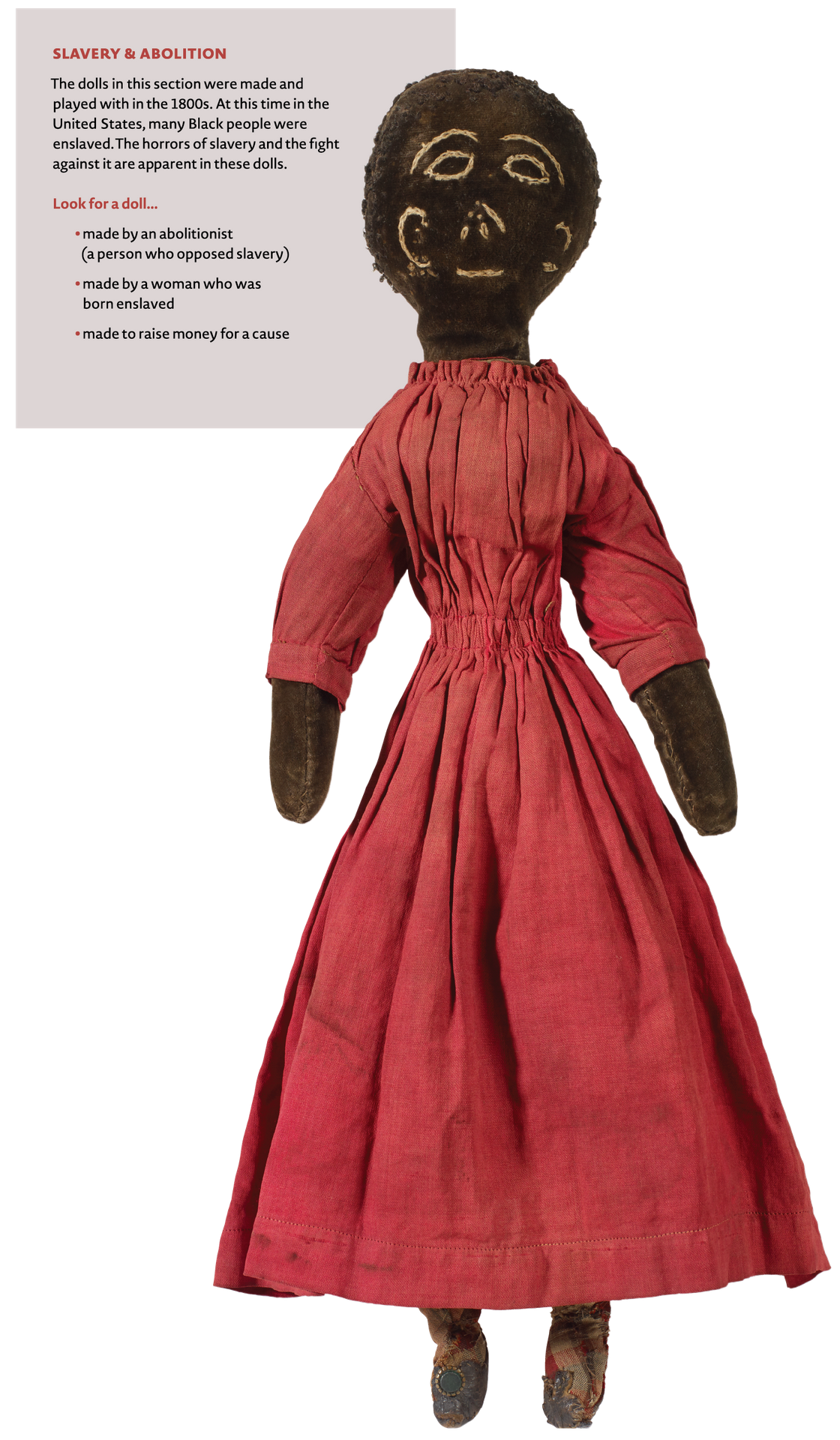




Enslaved people made and played with some of the
earliest Black dolls in America. Oral histories and the few surviving dolls
provide evidence that enslaved children played with and cherished “rag dolls.”
The frequent mention of cloth dolls is not surprising, given that many enslaved
artisans spun, knitted, wove, and stitched bedding and clothing for their
owners. Enslaved people also made cloth goods for
their own homes, families, and communities. Skilled seamstress Harriet Jacobs,
for instance, was charged with sewing clothes for the other enslaved people on
a family plantation and later used her needle to make dolls for the children in
her care.
Prior to emancipation, Black and white women alike
took up the needle as a political tool. The act of making dolls for
enslaved children affirmed their personhood and right to play when the slave
system denied their very humanity. Northern women organized fairs to raise money for the
abolitionist cause in the 1830s through the 1850s.
Antislavery sewing circles
made up of women and children contributed clothes, dolls, and household items.
At these fairs, the price tags attached to Black dolls underscored the evils of
a system that condoned sale and ownership of human lives.
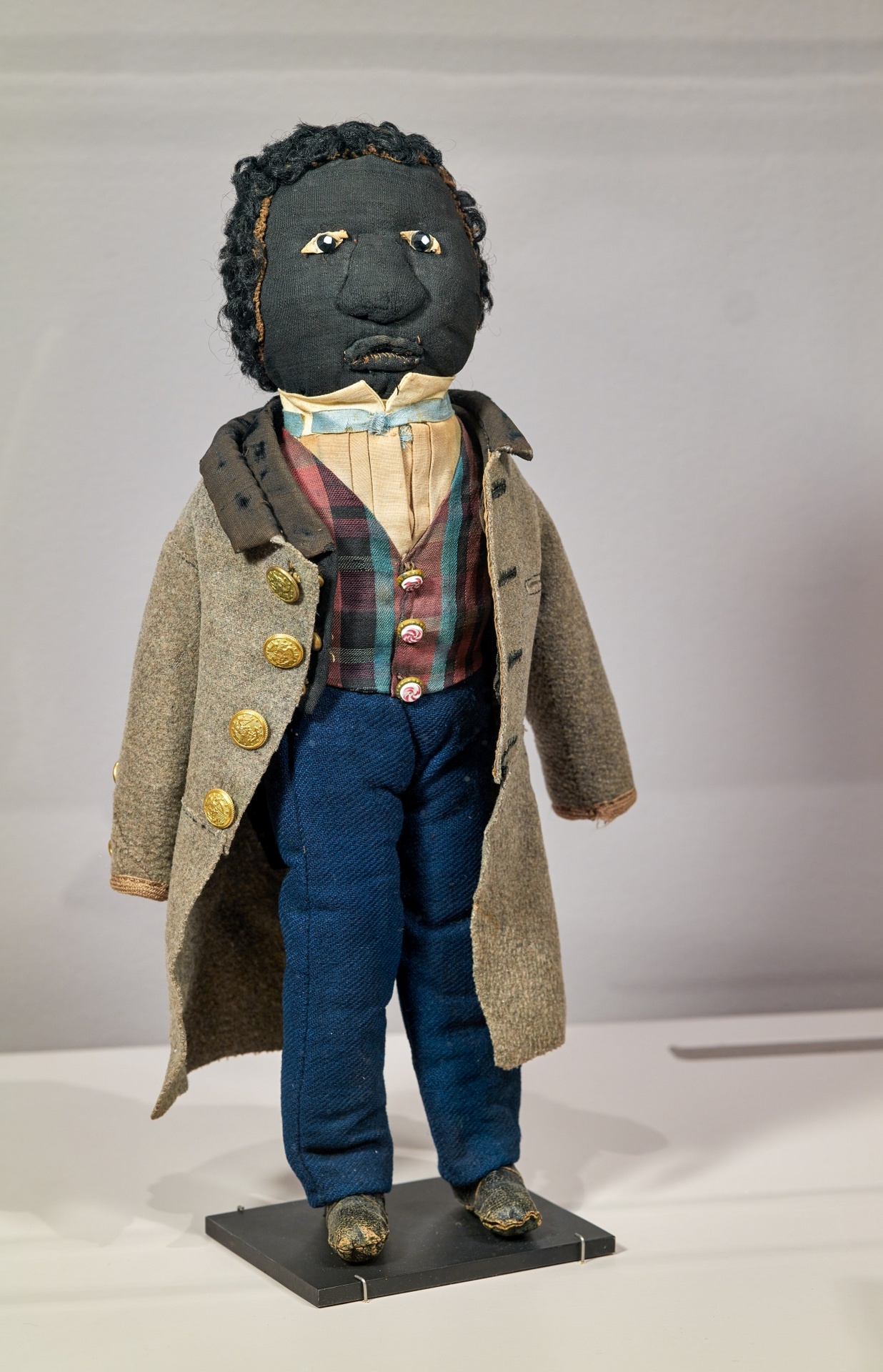
Doll
in gentleman’s top coat,
Milton, MA, ca. 1860-70
Mixed fabrics, leather, brass, glass
A handwritten note accompanying this doll states that
it was stitched by a member of the Badger family of Milton, Massachusetts, and
sold to support Union soldiers during the Civil War.
This dignified gentleman defies racist stereotypes,
perhaps a goal of doll makers for antislavery and Civil War era fundraising
fairs. Some abolitionist families encouraged their children to play with dolls
like this to help instill humanitarian values.
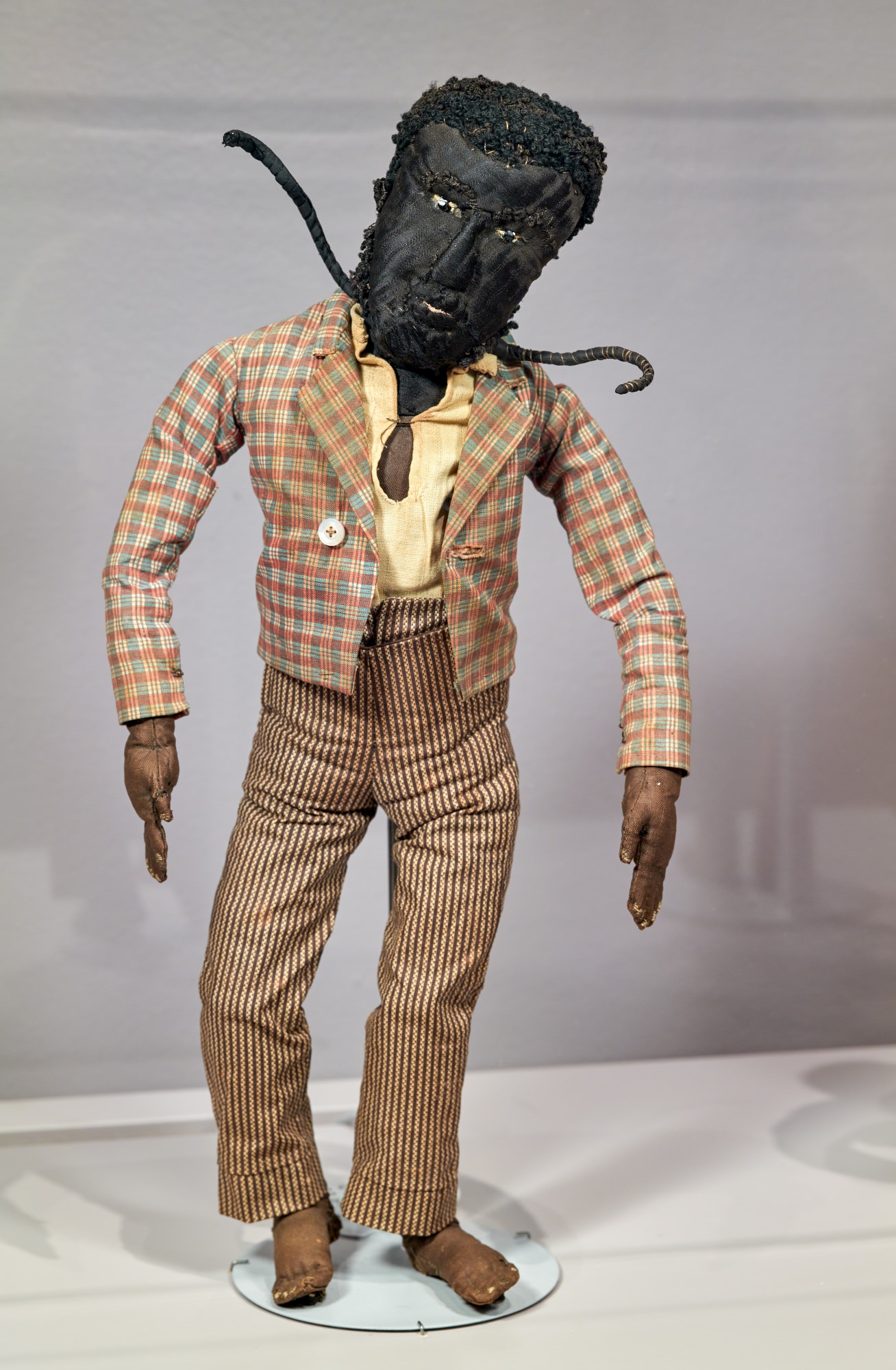
Cynthia Walker Hill (1771-1848)
Doll representing an enslaved man,
ca.1840-48
Cotton, silk, glass, wire, pearl
New Bedford Whaling Museum,
Gift of Mrs. M. Motley
Sargeant, 1953.1.
2
The horrors of slavery are palpable in this doll, a
fugitive from slavery wearing a three-pronged slave collar around his neck.
The doll was made by Cynthia Hill, a fervent
abolitionist from Providence, Rhode Island. A hotbed of abolitionist activity,
Providence was one of many New England towns that formed antislavery societies
in the 1830s.
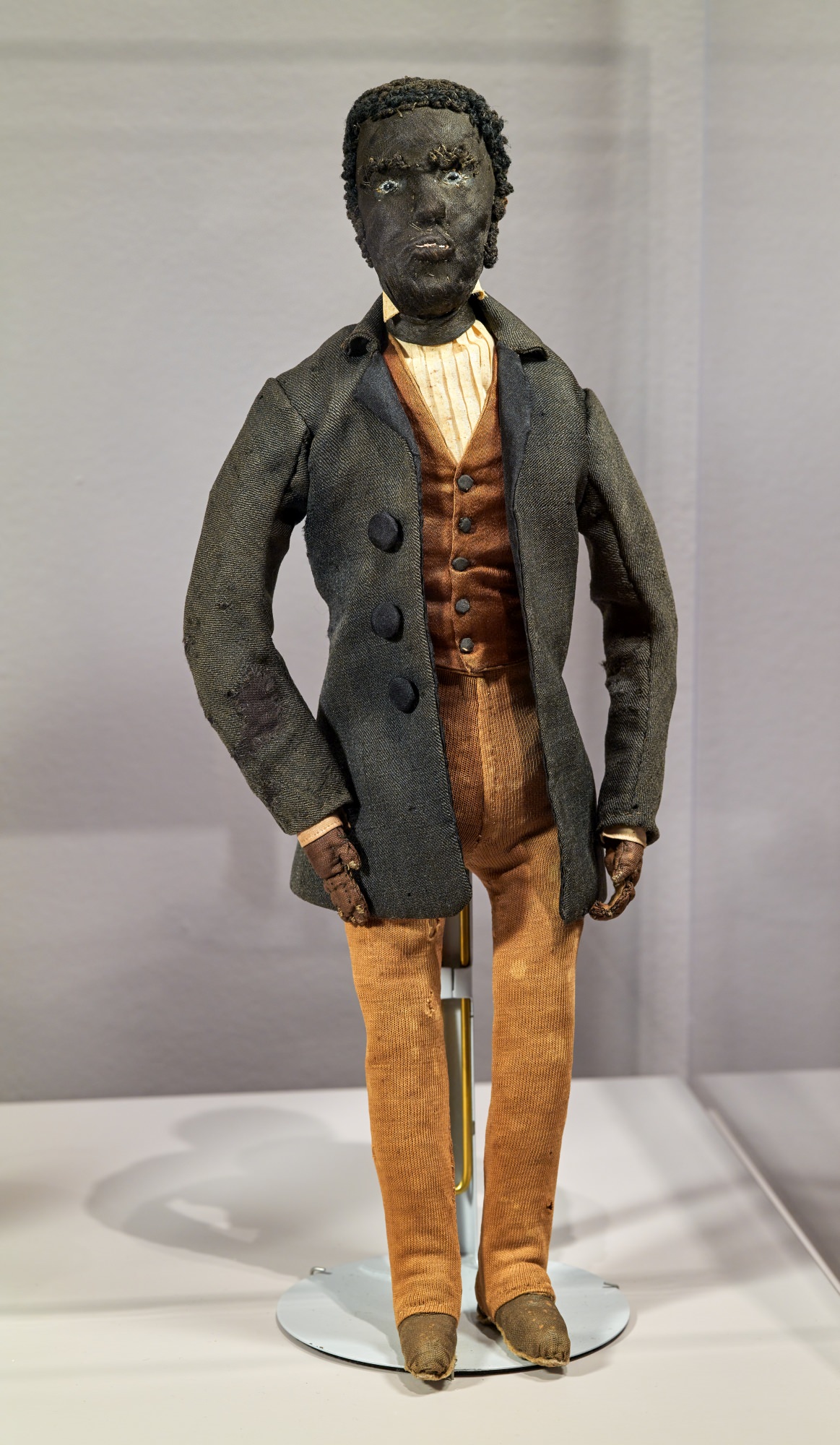
Cynthia Walker Hill (1771-1848)
Doll representing Frederick Douglass,
ca. 1840-48
Cotton, silk, glass, porcelain
New Bedford Whaling Museum, Gift of Mrs. M. Motley
Sargeant, 1953.1.1
Born into slavery, the abolitionist Frederick Douglass escaped to the North and settled with his wife in the abolitionist stronghold of New Bedford, Massachusetts. In 1841, he began giving lectures about his struggle for freedom and urging others to join the fight against slavery. Providence abolitionist Cynthia Hill, perhaps inspired by an eloquent speech or his compelling autobiography, created this doll in Douglass’s image to honor him and his struggle for abolition.
Rosena Disery (1805-1877)
Sampler stitched at the New York
African
Free School, 1820
Silk on linen
New-York Historical Society, Purchased
through the generosity of the Monsky family, the Coby Foundation, Barbara
Knowles Debs and Richard A. Debs, Patricia D. Klingenstein, Nancy Newcomb and
John Hargraves, Charles Phillips, Pam B. Schafler, Sue Ann Weinberg, and the
Goins Family Fund, 2011.9
Sewing was a valuable skill for free
Black women and girls. At the New York African Free School—founded in 1787 to
educate and aid Black children—all female students learned to sew.
Fifteen-year-old student Rosena Disery stitched this spare sampler as a school
exercise and displayed it as evidence of her needlework prowess. By the time
she graduated, Rosena would have learned plain sewing, mending, knitting, and basic
embroidery: all useful skills for making dolls.
Sarah Ricks (b. 1835)
Sampler stitched at Colored Public School No. 3,
Williamsburg, Brooklyn,
ca. 1845-50
Wool and silk on linen,
New-York Historical Society Purchase, 2012.11
Sarah Ricks, daughter of a prominent Black
abolitionist, made this sampler while attending Brooklyn’s Colored Public
School No. 3. Embroidering the alphabet in simple cross-stitch started Sarah on
the path to mastering sewing, a skill she might eventually use to help support
a family.

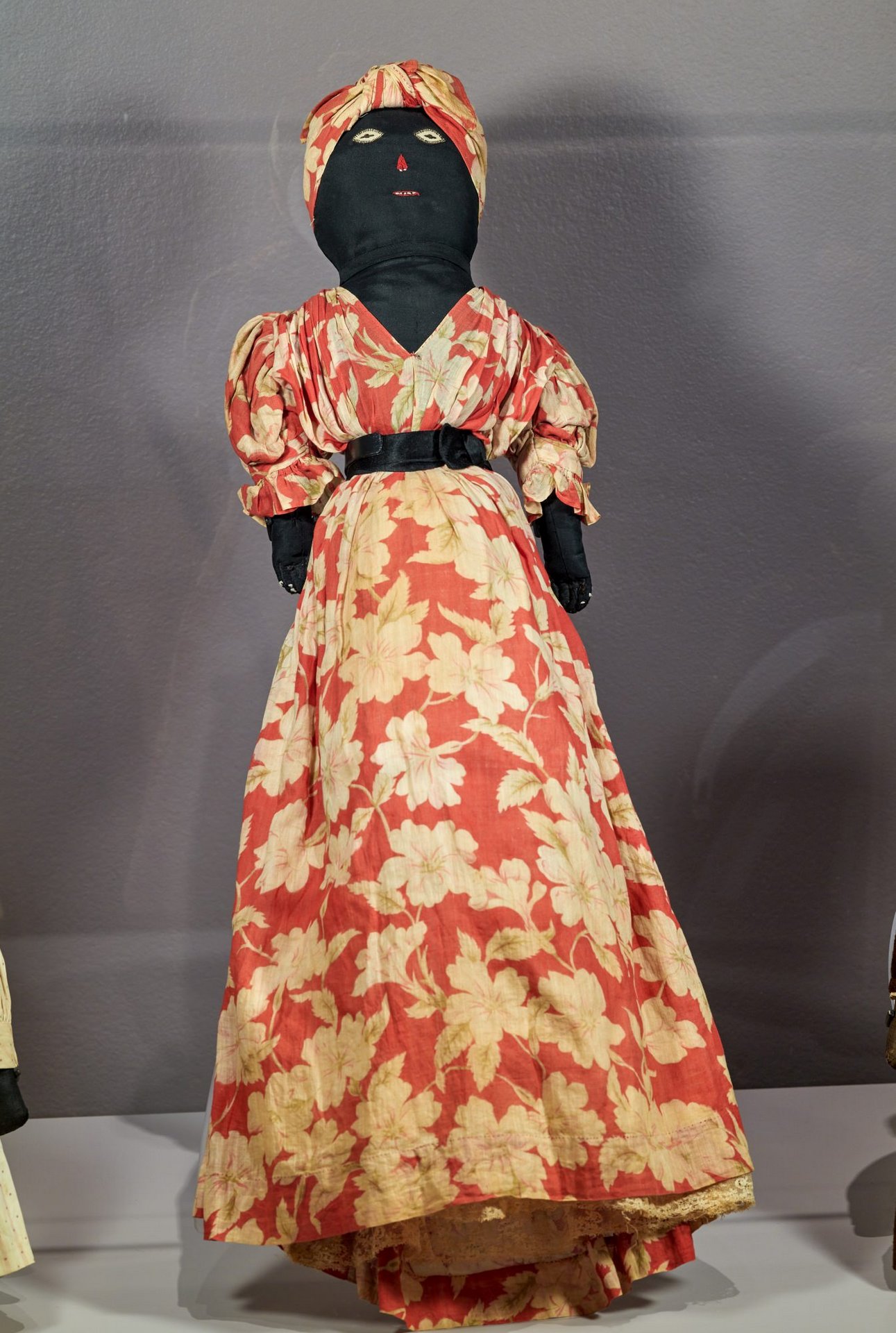
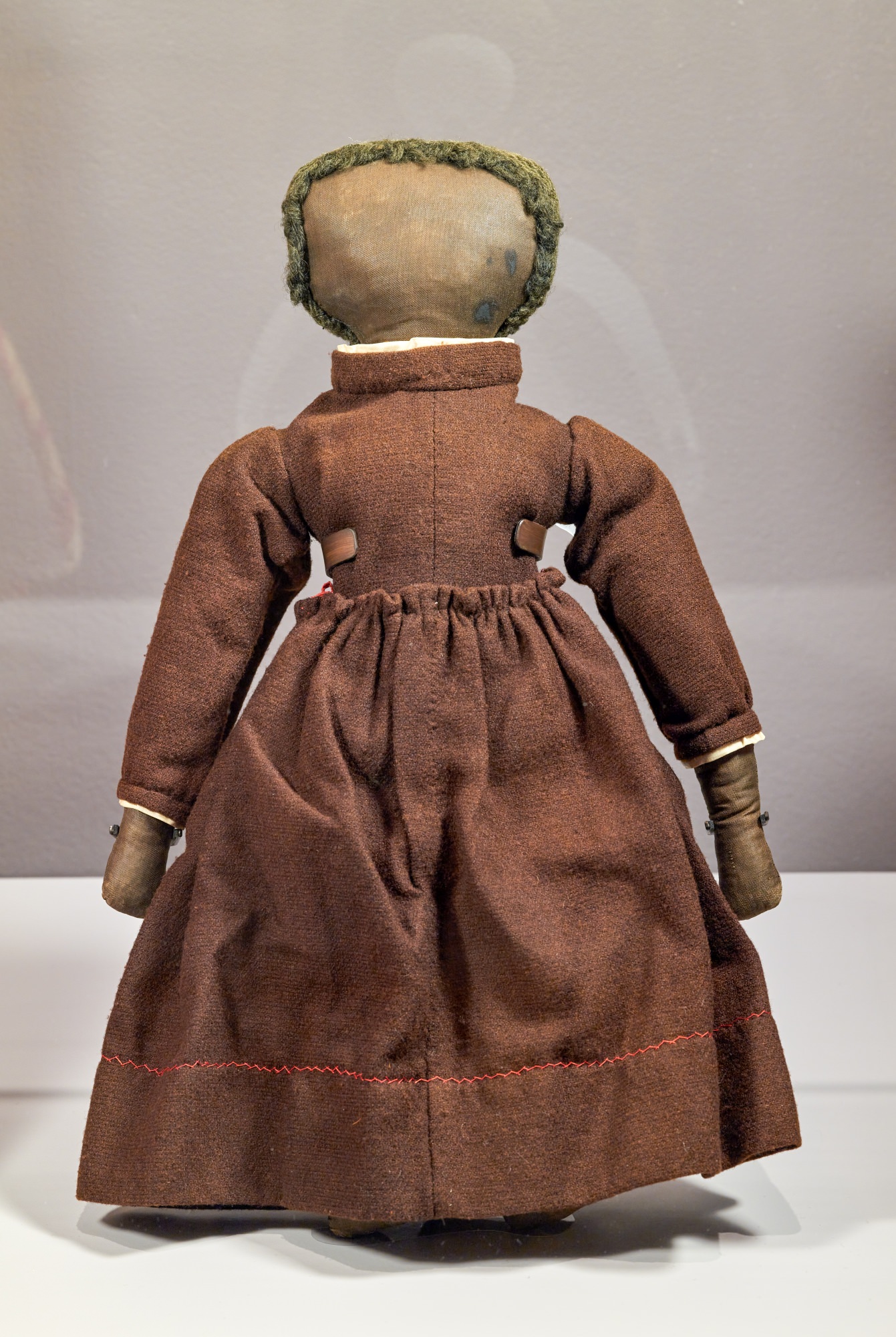
Harriet Jacobs (1813-1897), Dolls made for the Willis family children, ca. 1850-60. Mixed fabrics, metal. Private Collection
Harriet Jacobs (1813-1897)
Incidents in the Life of a
Slave Girl.
Boston, 1862
Harriet Jacobs wrote her autobiography during the
1850s while caring for the Willis children. She finally published it in 1861
under the pseudonym Linda Brent, with editorial help from antislavery author
Lydia Maria Child. Until the 1980s, most readers assumed that Child had written
the book. Today Jacobs’s authorship is unquestioned, and her work is considered
one of the most important slave narratives ever written.
Jacobs recounts her desperate flight from slavery,
spurred by the violence and sexual predation of her owner. She hid in an attic
crawl space for nearly seven years before managing to escape to the North and
eventually reunite with her children. In that gloomy garrett, Jacobs sewed to
relieve her loneliness.
